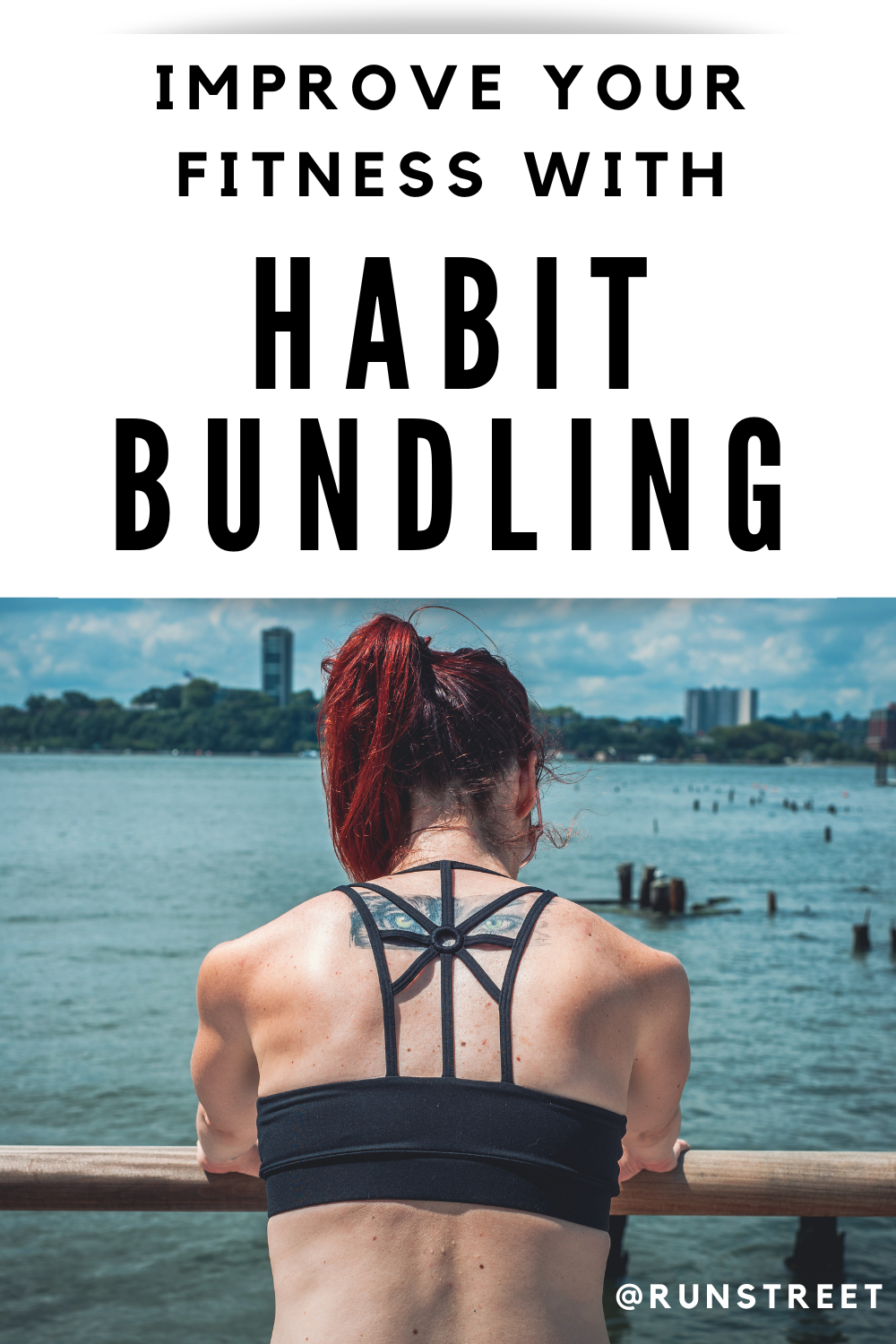How Habit Bundling Can Improve Your Fitness
An Art Run is a fun way to combine seeing street art with your running workout. Photos by Marques Jackson Photography.
By Marissa Del Mistro
What is habit bundling and how can it help you improve your fitness? Start by thinking of something you absolutely love doing and always look forward to doing. Have you got this activity in your mind? Now, think of the opposite - something you aren’t the biggest fan of, or something that takes a lot of self-motivation and discipline to get going but needs to be done. Got it? What if you combined both those things into one?! Sound crazy? Nope - not at all, this common motivational practice is known as habit bundling. Pairing something you love - a reward - with difficult habits that are good for you - such as studying, working out, etc - can help you make long term progress toward your goals and enjoy better health.
What is Habit Bundling?
Habit bundling, sometimes referred to as temptation bundling, works by linking an action that you don’t really want to do, with something you need to do. It is a very useful tool for people who want to build on their healthy habits but are struggling to stop procrastinating or decide. Habit bundling was coined by Dr. Katy Milkman, who is a professor at the Wharton School of the University of Pennsylvania and Penn’s Perelman School of Medicine. Dr. Milkman is a behavioral economist, whose research focuses on economics and psychology to find mechanisms for healthy behavior change.
Adults work through making an incredible 35,000 conscious decisions every single day! Sometimes those decisions are easier than others – but sometimes, after a long day you begin to think, “I don’t want to go to the gym!” “I don’t want to do the dishes,” “I really don’t want to finish my course work.”
Everyone wants to increase their productivity, feel energized and go to bed with a sense of pride, and habit bundling can help get you there without sacrifice. The idea is to pick something you should do (think: inputting your budget, going for a bike ride, doing daily meditation, reading a book) with something more relaxing or indulgent (listening to a podcast, watching your favorite series, etc.). An example of temptation bundling is going for a run on the treadmill while watching your favorite Netflix binge.
Popular author James Clear also discusses the power of temptation bundling in his book "Atomic Habits." In ths book, Clear explores the long-term benefits of making small changes in our daily habits to lead a more productive and fulfilling life.
Of course, it is important to look at habit bundling realistically. Everyone needs rest – and should never have to “earn” it. When you need it, you should reset and relax however you want to without guilt. However, we also have responsibilities that cannot be totally abandoned, which is where habit bundling can help.
Related: 25 Running Tips for Beginners
Work Smarter, Not Harder
Isn’t working smarter and not harder what we all want, really?! Habit bundling is the epitome of that. Over time, the behavior that you must do will likely become attractive, since it’s paired with doing guilty pleasures that you love.
To start, grab a pen and paper or use the notes app in your phone. On one side, write some things that you love spending time doing. Then, in a second column, write down some activities that you want to include more of into your life, that you have been slacking on that you need to start doing more. You can get super creative with this idea. To get inspired with new ideas and creating habits, check our post on How to Build Healthy Habits.
After you have written your two separate columns, which should have been around 5-10 in each, you can begin to link them and connect two activities that make sense to do together for it to be easier.
Some examples of temptation bundling for your health are:
Try these habit bundling ideas to step up your fitness.
Only listening to your favorite podcast while on the bike/running/walking (want to find out what happens in episode 2?! Better get back to the gym!)
Catch up with your friend and chat while running or walking together.
Only watch your favorite show while cooking a healthy meal.
Only having a bubble bath while reading course material.
Only eat out at a certain restaurant with business colleagues.
Only listen to your favorite audiobook while walking your dog.
Only watch your favorite series while working out.
Only listen to your favorite audiobook while stretching.
Only have a $5 latte at a fancy coffee shop while doing a hard assignment.
Being an adult can be exhausting, so habit bundling doesn’t always have to be so serious and can also look like:
Filling in the monthly budget with a glass of wine
Only getting a pedicure when emptying your work email inbox
Getting your favorite takeout while completing tax paperwork
Only buying something from your favorite shop after reaching your monthly target of ___ miles/km running
There is also an alternative approach that works by combining habit stacking and habit bundling to create something like: after I attend my work zoom meeting, I can watch my favorite YouTube channel video. Or I will do 10 burpees and then scroll TikTok/Instagram for 10 minutes or, I will take the garbage out then I can scroll social media for 5 minutes.
The idea with these is that the need-based activity becomes substantially easier and more appealing when you know it’s either associated with or quickly followed, by a rewarding thing. This is called habit stacking. Let’s be honest…adults are basically just children that still like getting a cookie for staying quiet throughout church!
Does Habit Bundling Really Work?
Habit bundling does work – but it, of course, requires dedication and willpower. It means not allowing yourself to cheat. If you make a New Year's resolution to run more and begin to watch the Netflix series you are only supposed to watch while on the treadmill, well, the plan will inevitably begin to fall apart.
The effect of temptation bundling can be improved fitness and health. The science behind new habits is that it takes anywhere from 66 days to 8 months to stick to your new habit. So be patient and try to practice some self-control for the best results.
When it comes to starting new habits, there is no “perfect” time to start – just what works for you. Some people find the most success when their new habit is in line with changes or special events – such as New Year’s Eve, a birthday, a Monday, or a new season. This does work for some people but not everyone. The best time to get started with habit bundling is when you feel you need it and understand that you can stick to it.
According to Herbert Lui of Lifehacker, over time the thing you “should” be doing will become more of a regular habit, and eventually, you can even lean away from the tempting activity and just do the “should” activity without the “want” activity, as Lui describes the want activity as more of a kick-starter to building new habits. This will vary for everyone, so just stick to what works for you. If you cancel out the Netflix show while on the bike and hate it and stop – bring back the Netflix!
Habit Bundling for Success
Getting into a routine of starting new, positive habits is hard for everyone as it takes self-motivation, discipline, and it can be tempting to just take the easy way out. Pairing your “must do” activity with something more fun - such as listening to audio novels or watching Netflix - helps trick your mind into thinking you sort of are taking the easy way out! Many people already do habit bundling without even realizing it!
What is your experience with habit bundling? Let us know your favorite habit bundling routine by following and tagging @Runstreet on Instagram to share your journey and get encouragement. If you need a training plan to help you crush your next race or your big fitness goal, visit the Runstreet Training Center so we can help.
Related Posts: How to Build Healthy Habits, How to Make a Self-Care Plan, Relaxation Tips for Runners
Marissa Del Mistro is a writer, editor, and always on the hunt for the perfect workout. Marissa absolutely loves trail running, dancing, and cycling. When she’s not writing, Marissa loves cooking, podcasts, traveling, and exploring her home in the beautiful unceded Coast Salish Territory of the Lekwungen and W̱SÁNEĆ nations.




